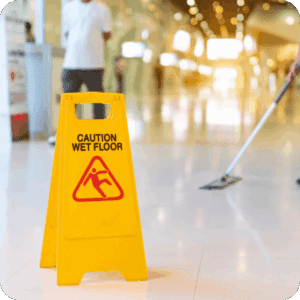 For many hoteliers, there is a great deal of confusion about the different revenue management technologies available on the market today. It’s hard to remember which technology calculates rates, which manages inventory, which updates the new prices to the online distribution channels, or if they do both. Some systems update rates in real-time, some only update once daily, or even less frequently. Talk about technology overload!
For many hoteliers, there is a great deal of confusion about the different revenue management technologies available on the market today. It’s hard to remember which technology calculates rates, which manages inventory, which updates the new prices to the online distribution channels, or if they do both. Some systems update rates in real-time, some only update once daily, or even less frequently. Talk about technology overload!
First, it’s important for you to determine what goal you are looking for your technology to help accomplish. Do you need help integrating market data into your pricing? Do you need help updating your rates across all of your online distribution channels? Or all of the above?
Once you’ve determined what your goals are, it will be easier to compare the two most common revenue management technologies, revenue management systems and channel management systems, to see which is a better fit for you.
So, let’s get down to itÉ
What are they?
A revenue management system (RMS) will analyze reams of data, suggest a specific room rates, forecast demand levels, monitor booking pace and factor in multitude of market segments. A sophisticated system will be a turnkey, all-in-one system, which will handle all aspects of the revenue management process, automatically, from start to finish.
In contrast, channel management systems, also known as channel managers, are only able to distribute room rates to the various OTAs used by the property. It is a very helpful tool because the revenue manager doesn’t have to manually update each OTA individually, making it an important piece of the revenue management puzzle, but it is only one individual component.
Rates
Sophisticated RMS analyze the market, historical data, booking patterns, booking pace andÊroom availability in real-time to determine the best rate at the right time to secure the maximum number of bookings. The goal of the RMS is to accurately assess the level of demand in the market and produce a rate that will not only drive the bookings for a given period, but also one that will help the hotel maximize the revenue opportunities.
Channel managers don’t help calculating, changing, optimizing or yielding rates. They don’t suggest when to raise or lower your rates, or suggest specific dates to monitor. They take the rates that were calculated manually by an RMS or just chosen at random and distribute the rates to all OTAs. It’s not automated and it must be manually updated.
Inventory
A big problem for hotels is overselling. Whether it’s because of human error or incorrect yielding, it is not a good thing for business. Additionally, allocating rooms to different OTAs and replenishing inventory can become a huge headache. While not all RMS willÊmanage your inventory across all channels, an optimal system will ensure that your inventory is adjusted automatically and in real time across all of your online channels. This will prevent overbooking and ensure that your rooms are available for sale via all distribution points.
Channel managers don’t offer any protection against overselling because they don’t offer built-in, automated inventory control. Using only a channel manager, the property’s inventory must be updated manually for all affected dates each time a room is sold.
Integration
A key factor in the successful implementation of a new technology into your property’s strategy is whether or not it integrates into the existing technology in use at your property. All systems should be integrated because it removes the Ômiddle man’, by allowing the technologies to communicate directly. Integration between all hotel management systems, whether by choosing one single system that does it all or whether you combine multiple integrated technologies, makes the technology more effective, more efficient and will create better results.
Channel managers will distribute rates, eliminate (some) errors and labor costs due to manual data entry; however, a channel manager will not help you increase your property’s revenue.
At the end of the day, both channel managers and revenue management systems are important tools, but each has very distinct advantages and disadvantages. Instead of choosing a stand-alone channel manager, why not invest in an all-in-one RMS that will help you set optimal rates and increase your overall revenue? After all, isn’t that your revenue management team’s overall goal?
By Jean-Francois Mourier
 Jean-Francois Mourier is the Chief Executive Officer of REVPAR GURU, whichÊprovides hotels around the world with an alternative revenue management software solution, designed to deliver maximum bookings and profits. As REVPAR GURU’s custom-designed Yield Dynamic Price Engine is the only real-time revenue management software available on the market, it meets the rapidly changing needs of hotels in a very demanding business environment. REVPAR GURU’s solution offers dynamic rate optimization, real-time pricing, integrated internet and extranet yield channel management and GDS sales distribution, to increase a hotel’s RevPAR intelligently and effectively, while maintaining rate integrity and automated rate parity. Since 2004, REVPAR GURU’s software solutions have been used by hotels worldwide to increase occupancy and RevPAR.Ê
Jean-Francois Mourier is the Chief Executive Officer of REVPAR GURU, whichÊprovides hotels around the world with an alternative revenue management software solution, designed to deliver maximum bookings and profits. As REVPAR GURU’s custom-designed Yield Dynamic Price Engine is the only real-time revenue management software available on the market, it meets the rapidly changing needs of hotels in a very demanding business environment. REVPAR GURU’s solution offers dynamic rate optimization, real-time pricing, integrated internet and extranet yield channel management and GDS sales distribution, to increase a hotel’s RevPAR intelligently and effectively, while maintaining rate integrity and automated rate parity. Since 2004, REVPAR GURU’s software solutions have been used by hotels worldwide to increase occupancy and RevPAR.Ê
Ê















